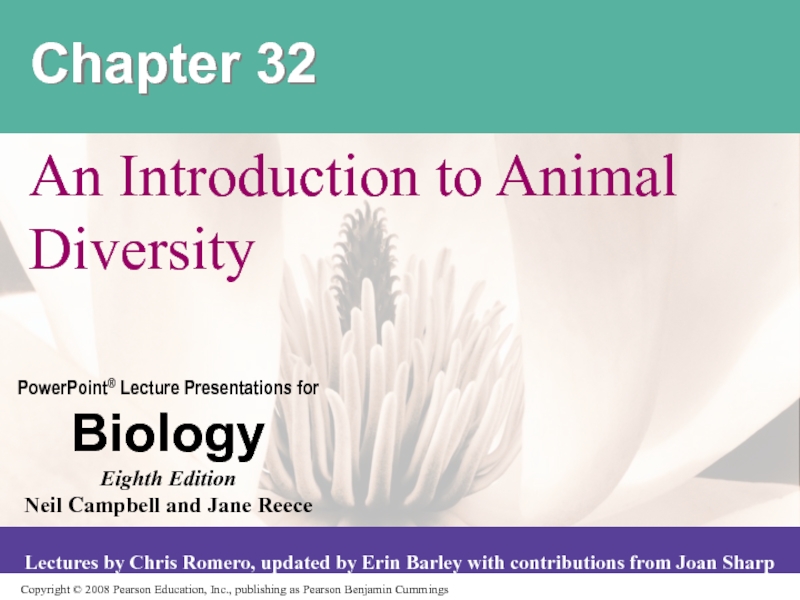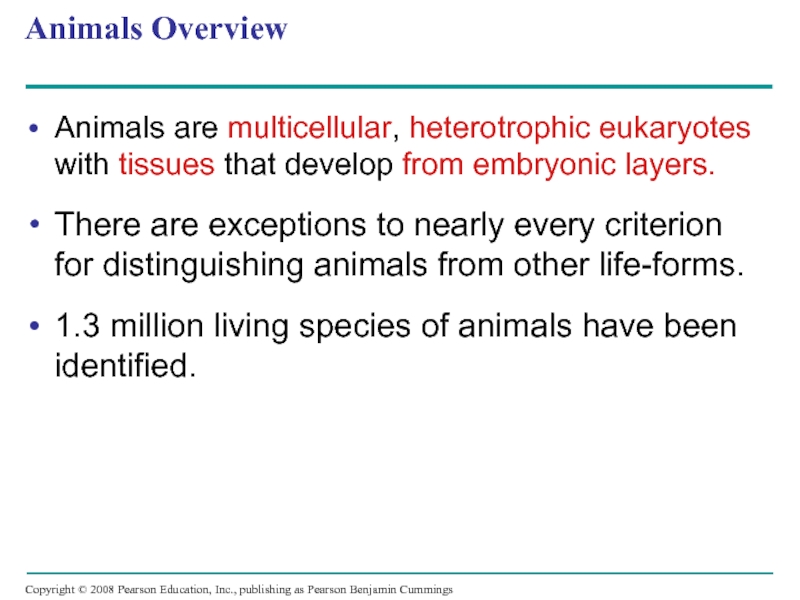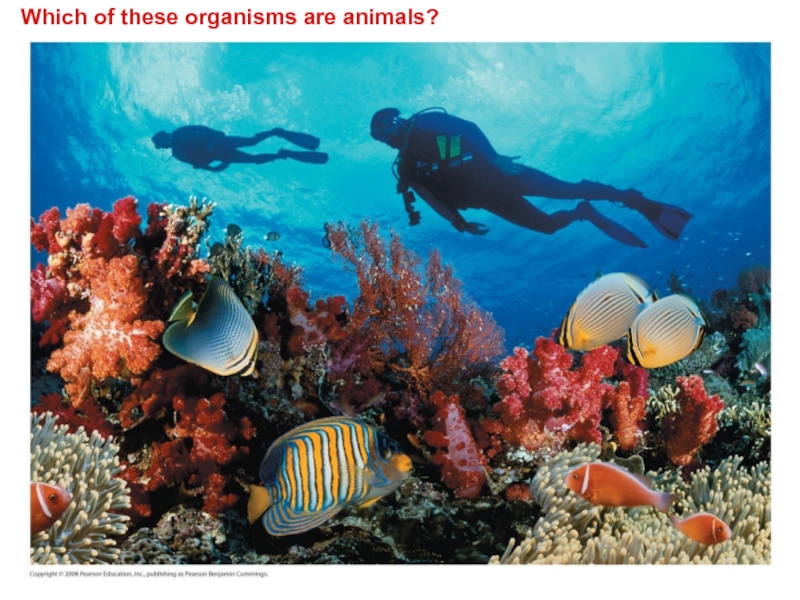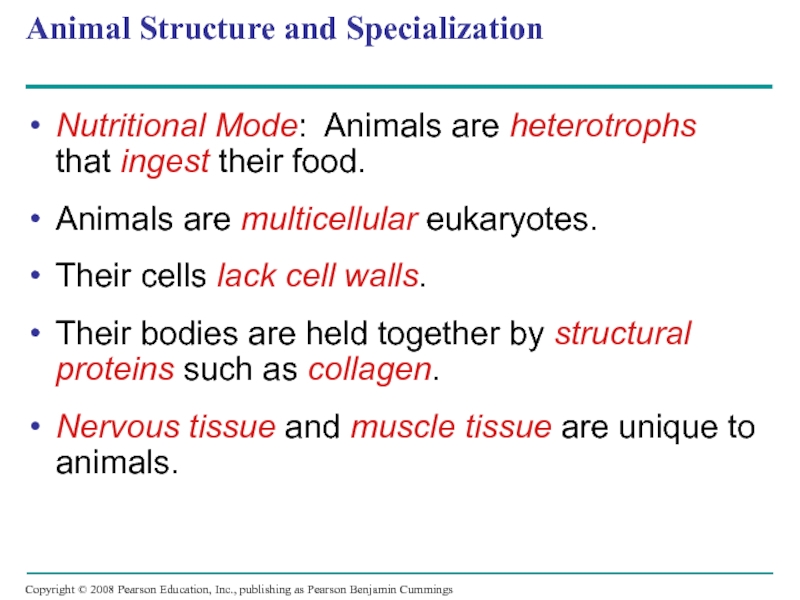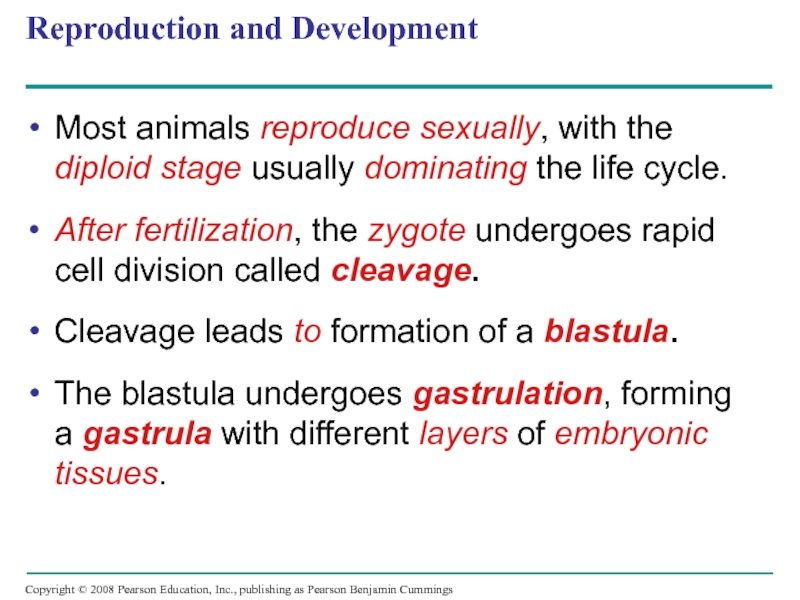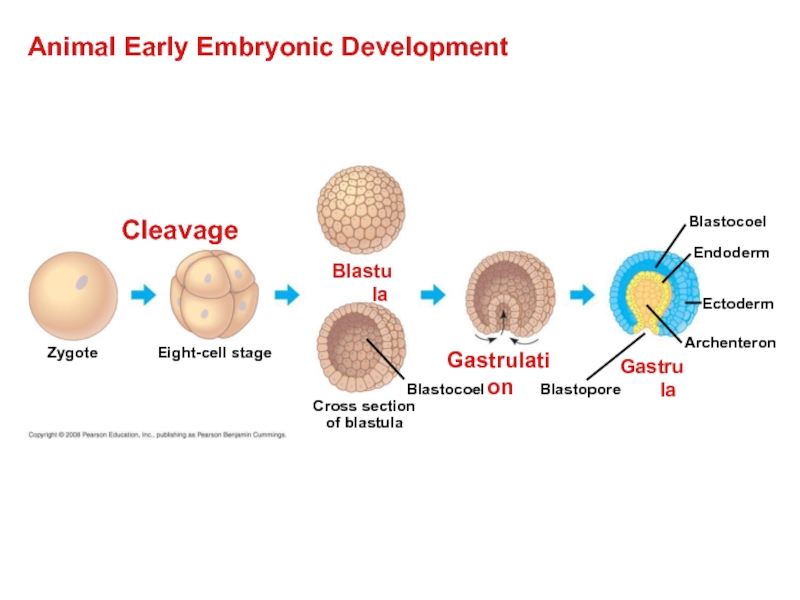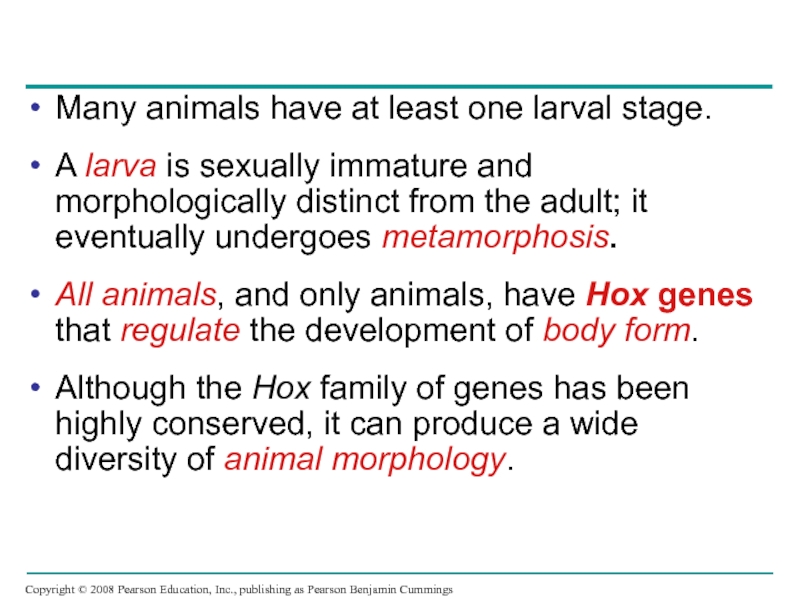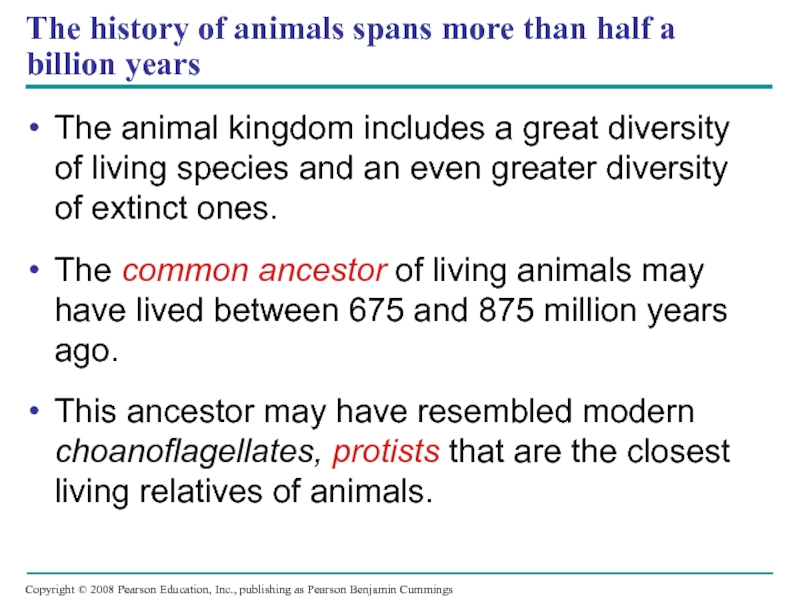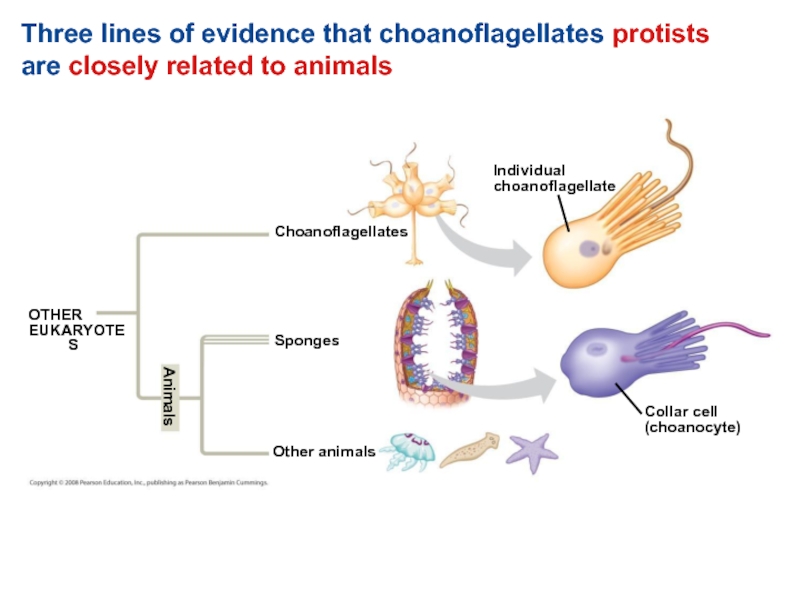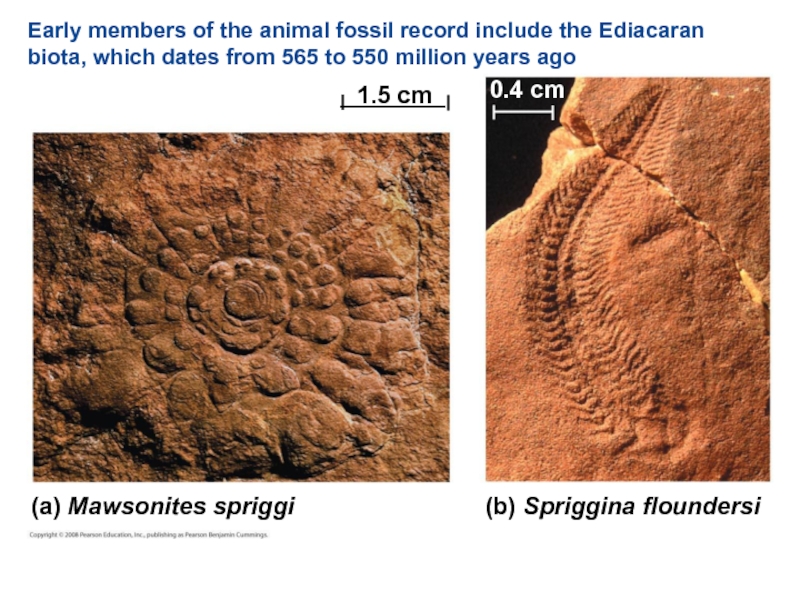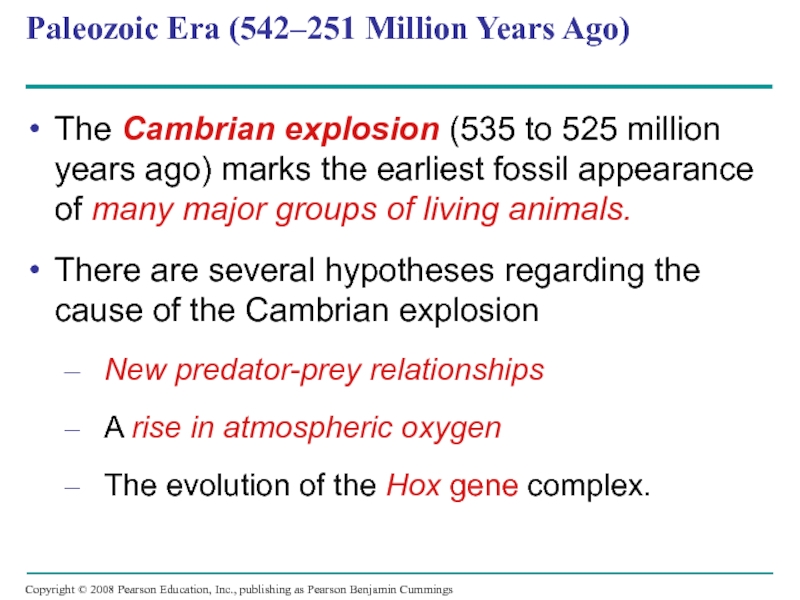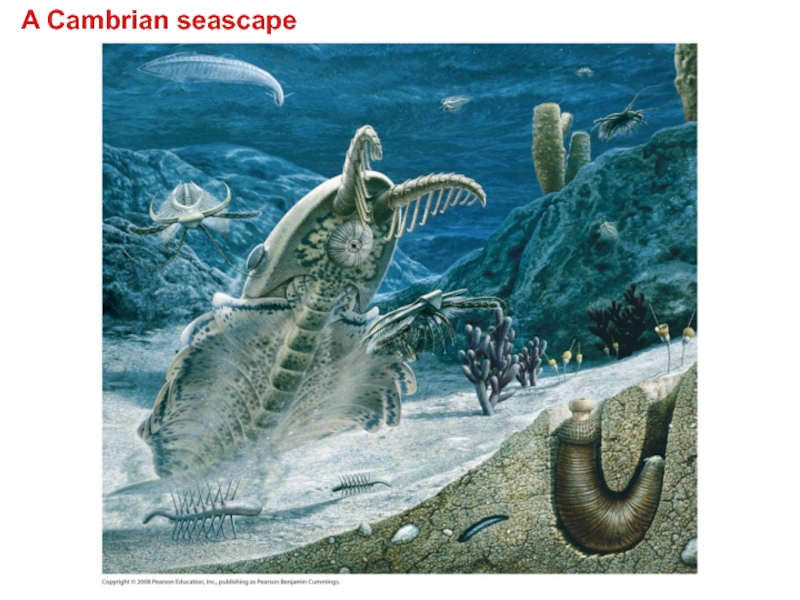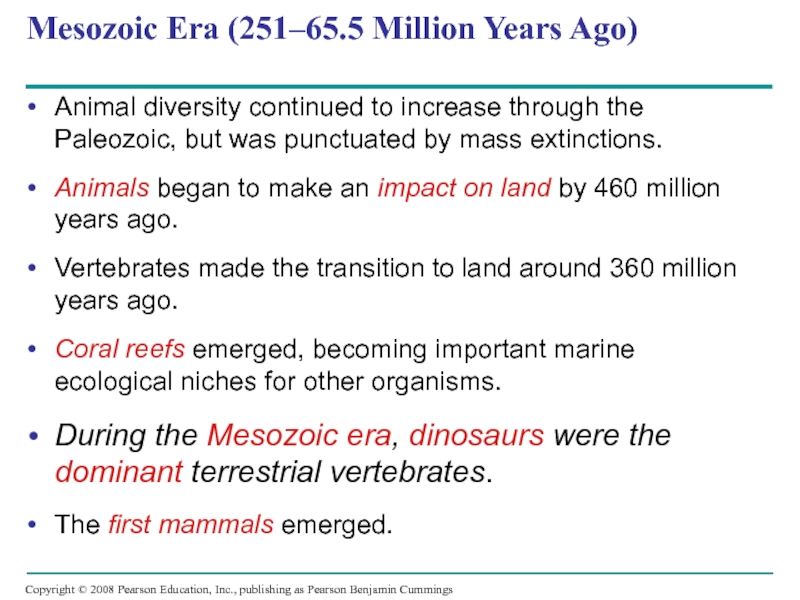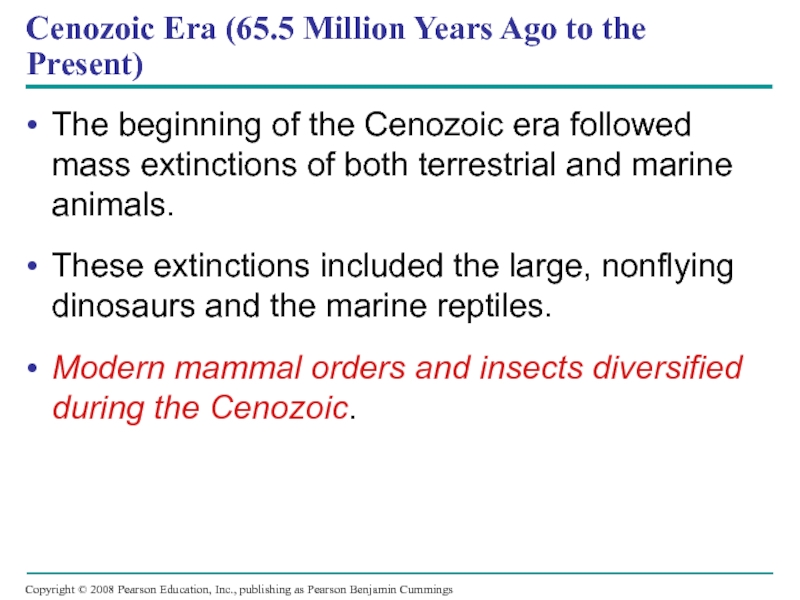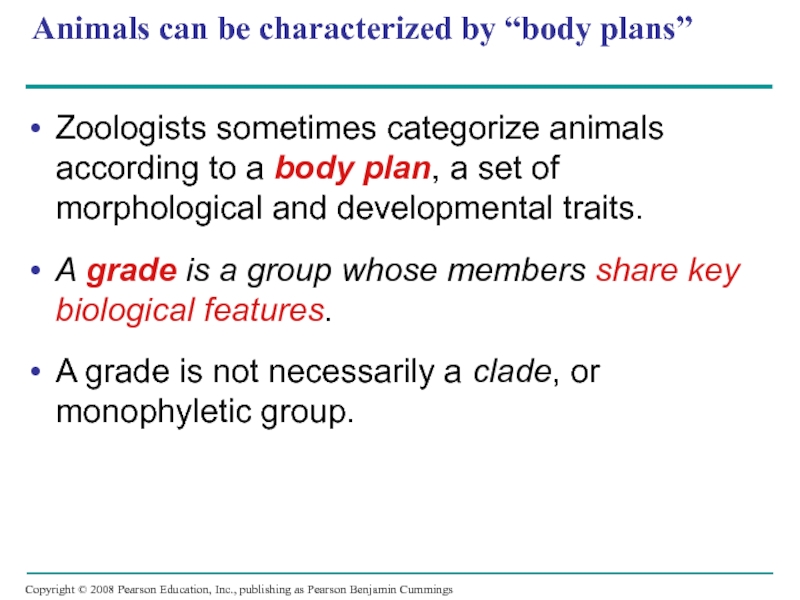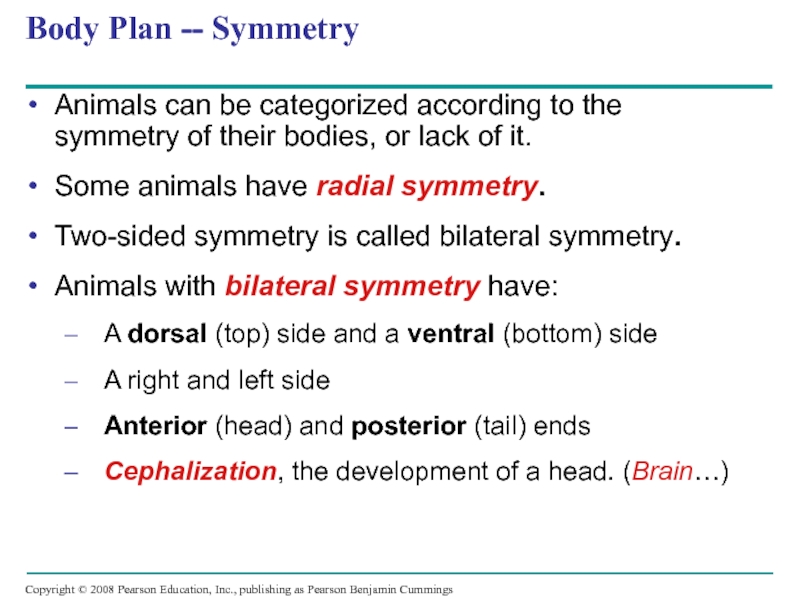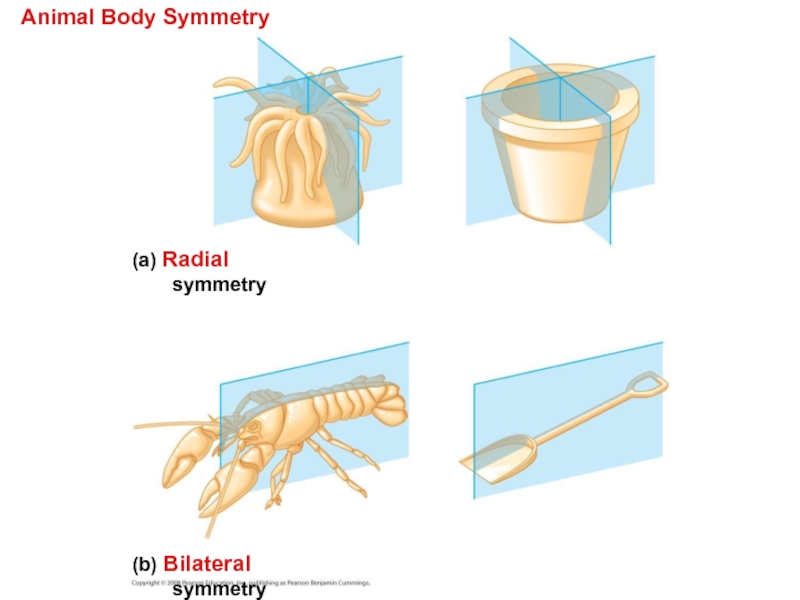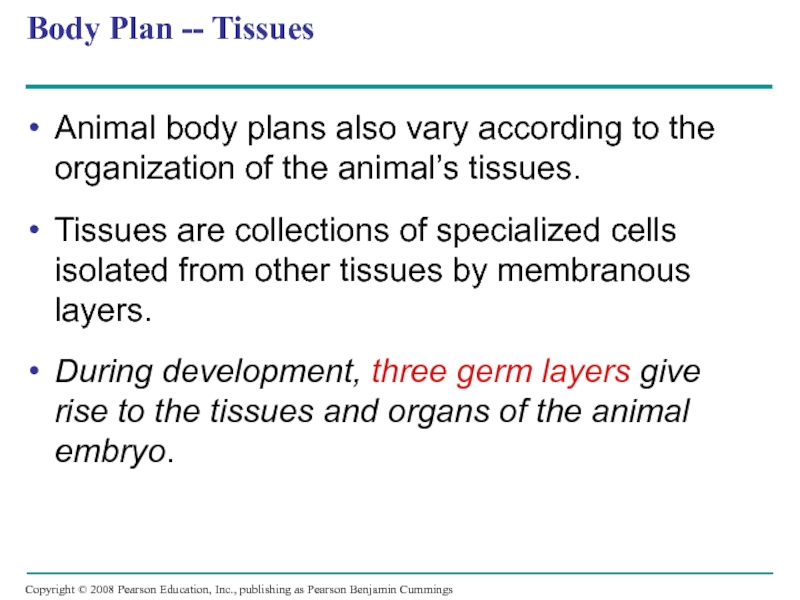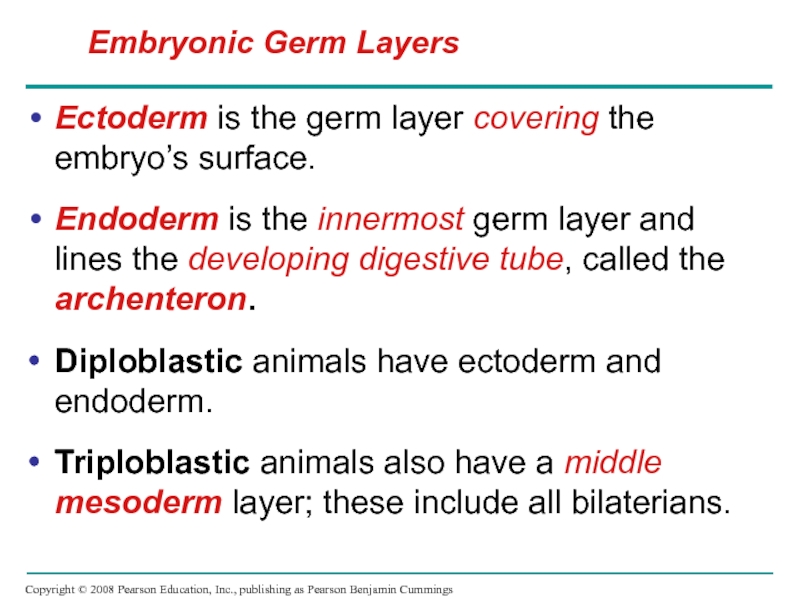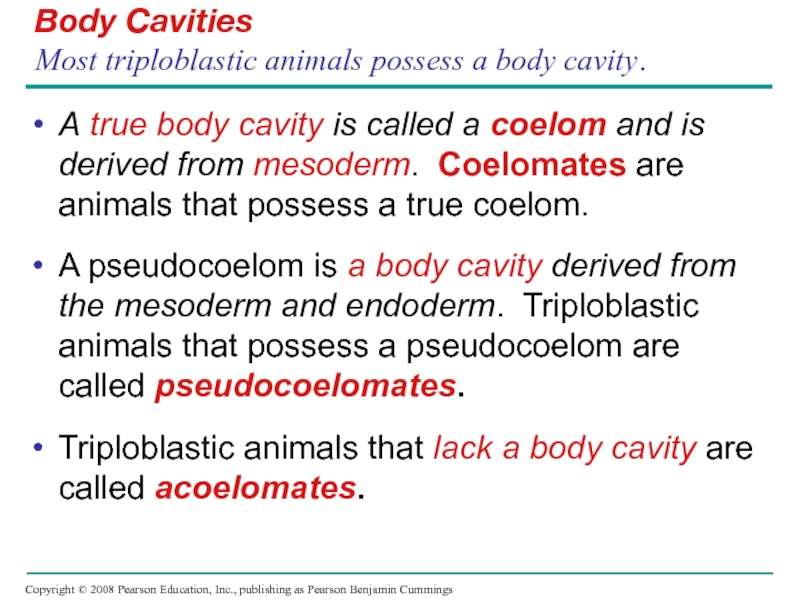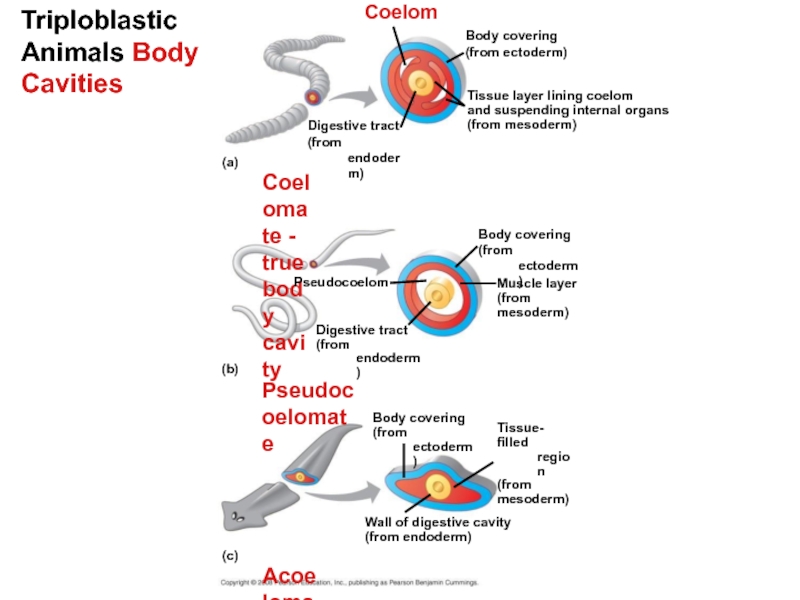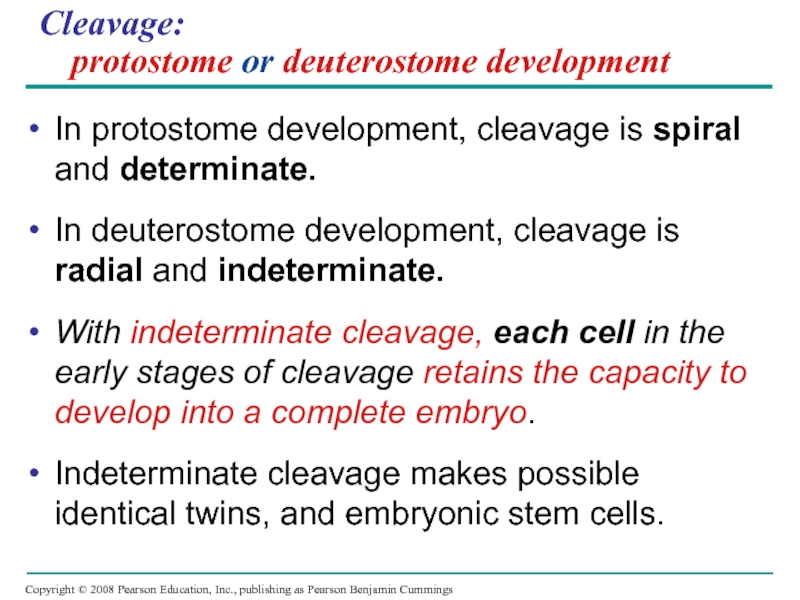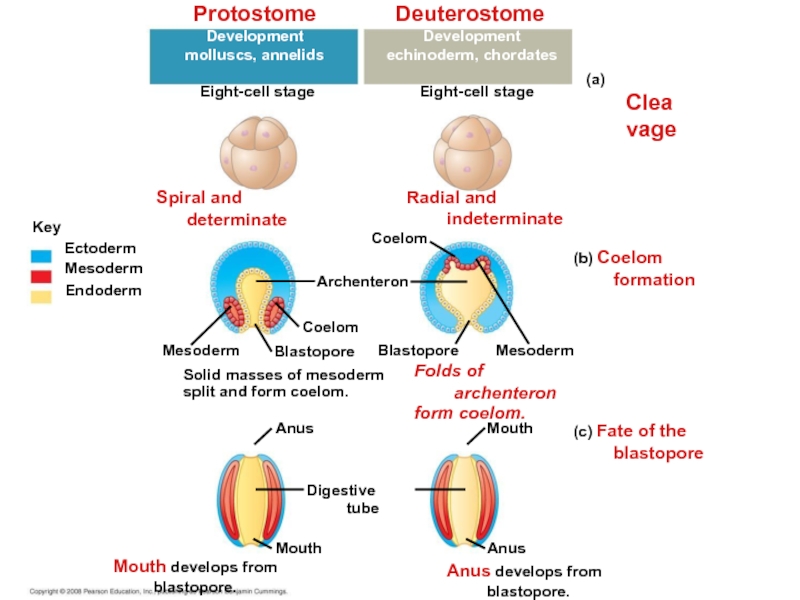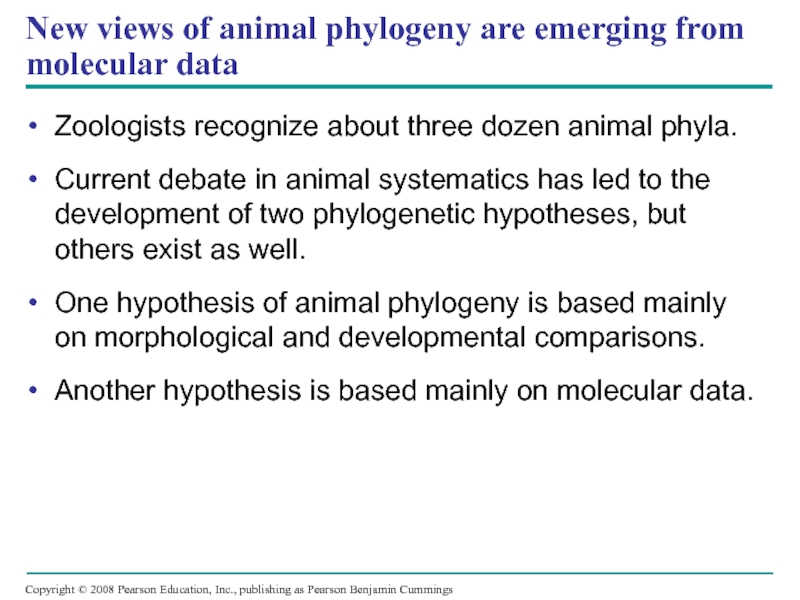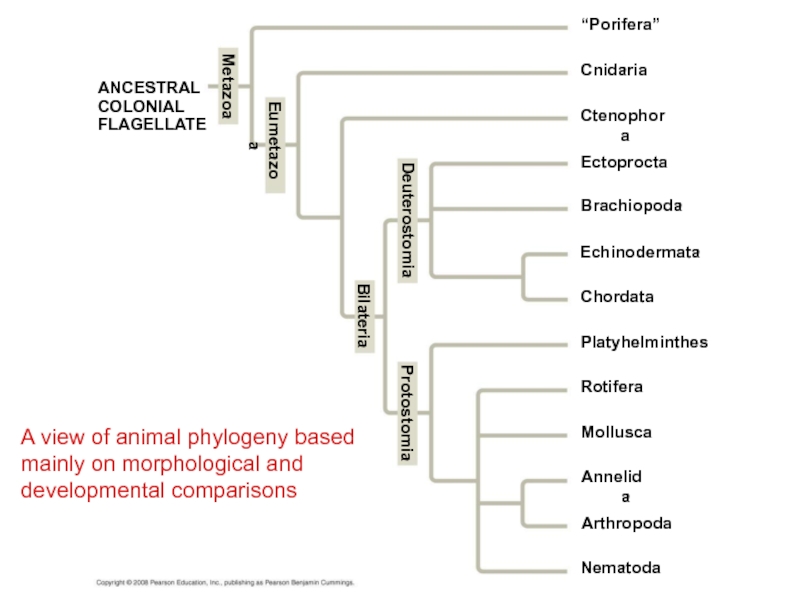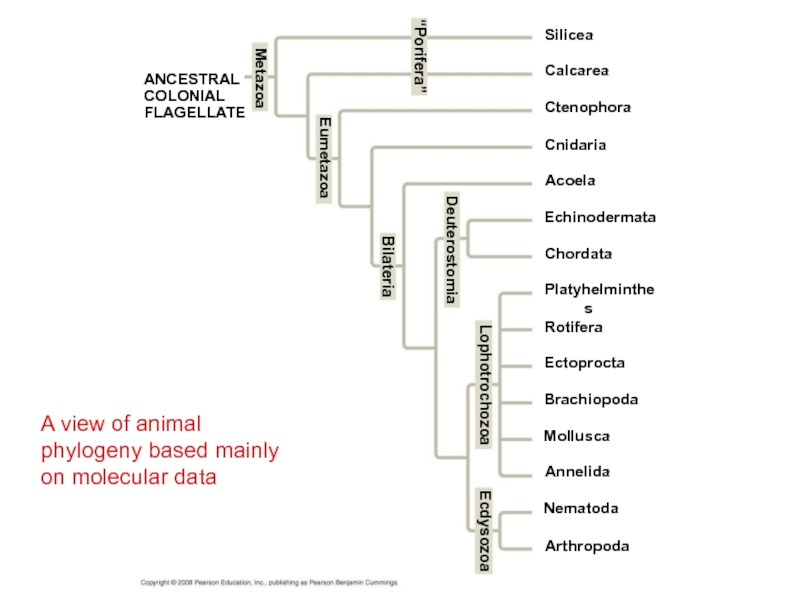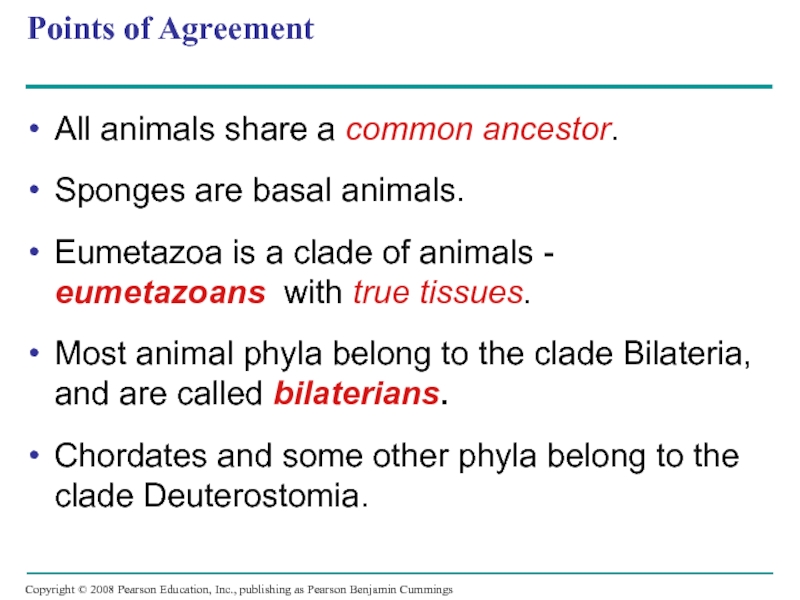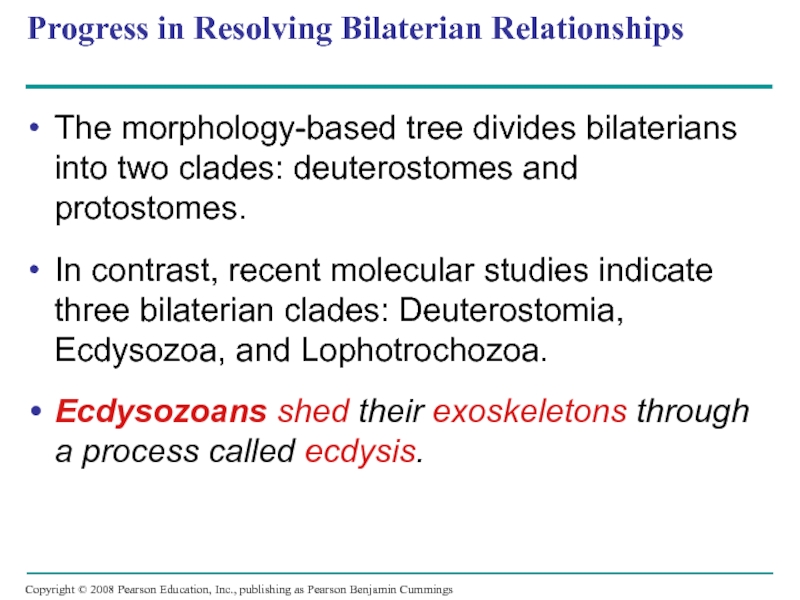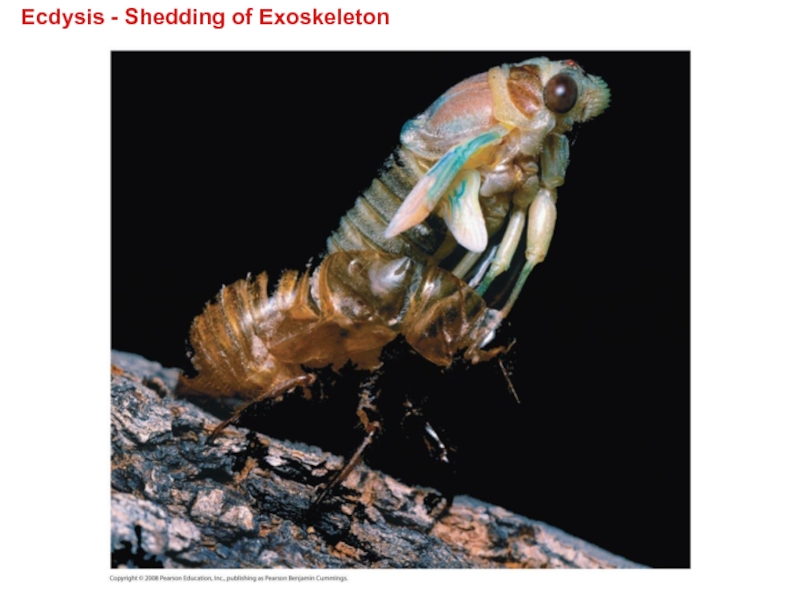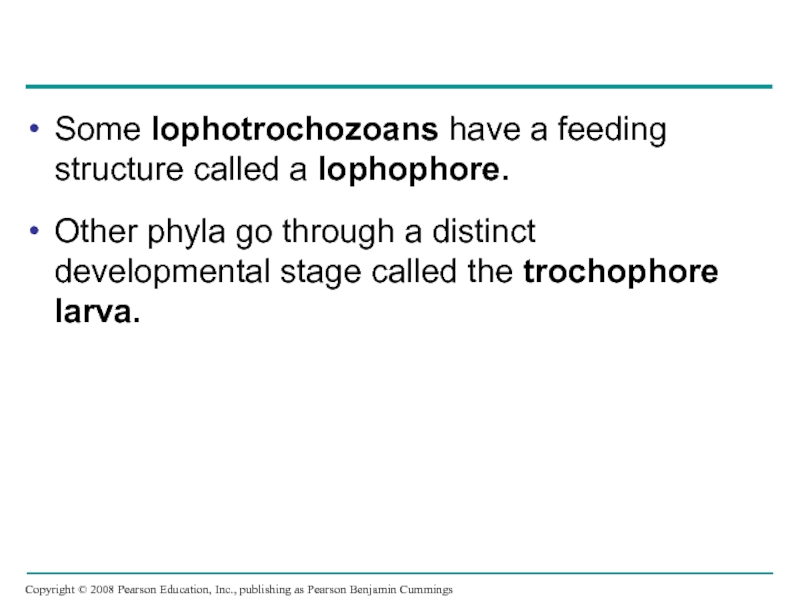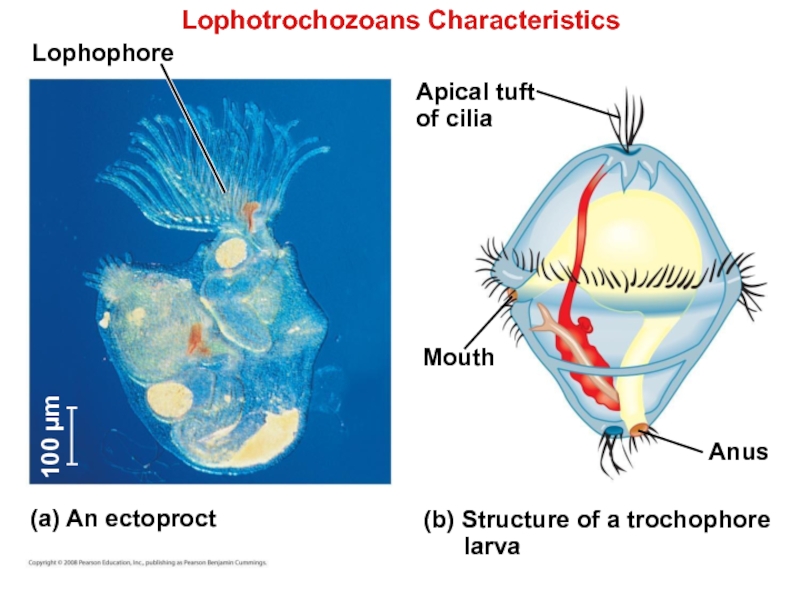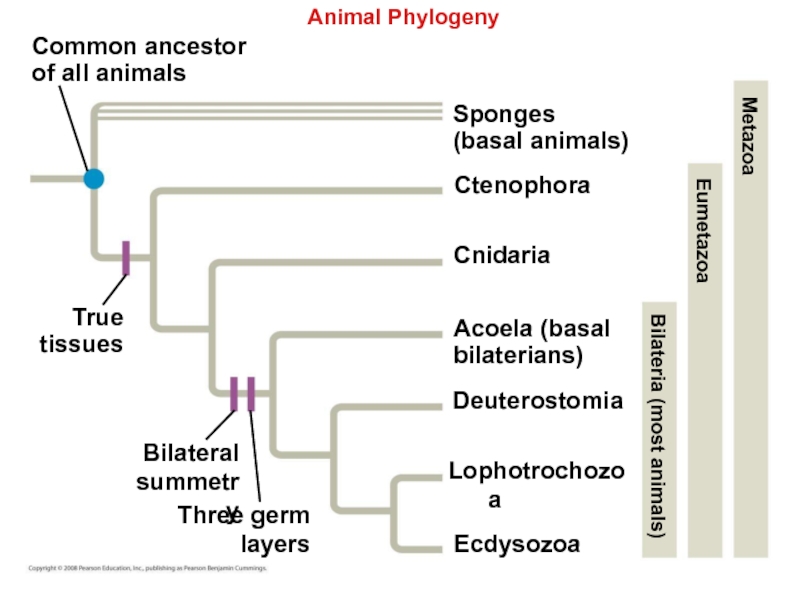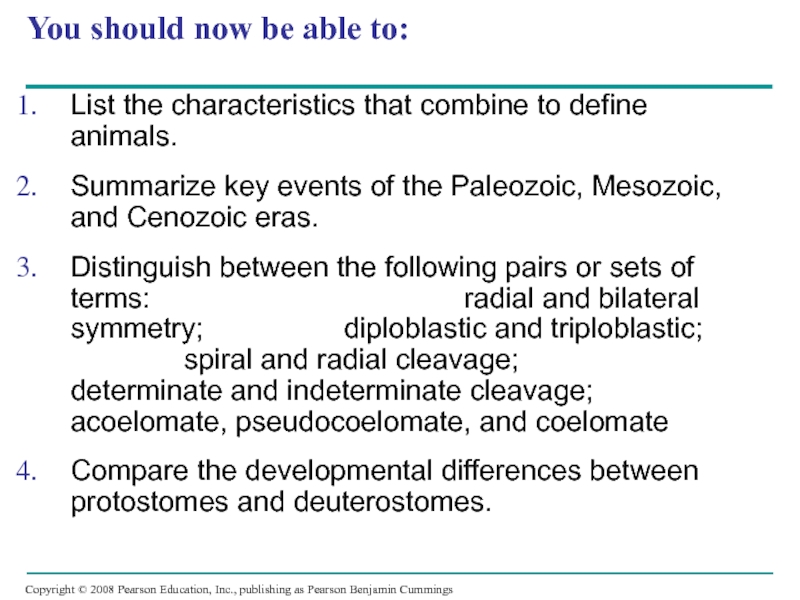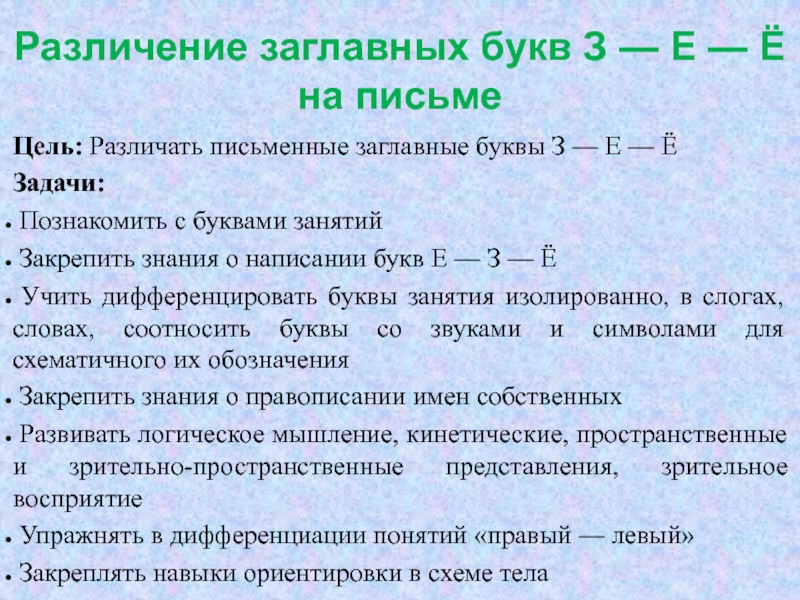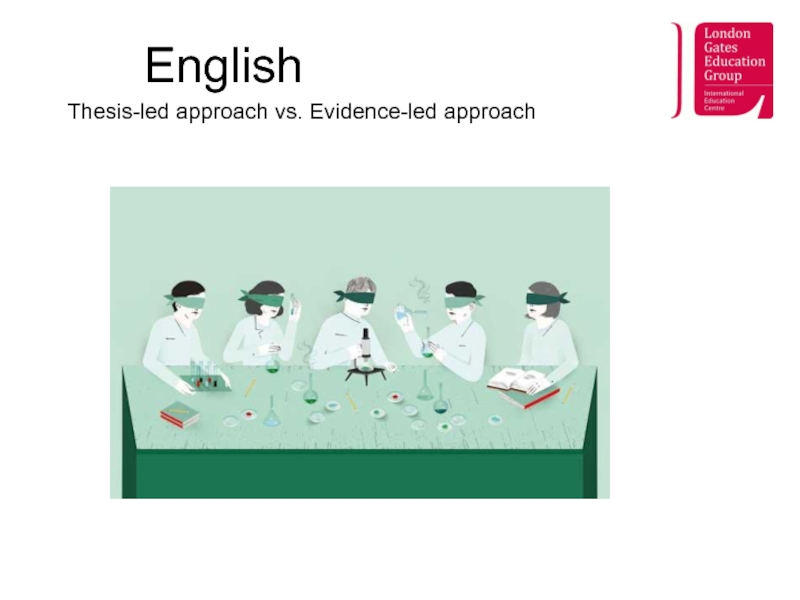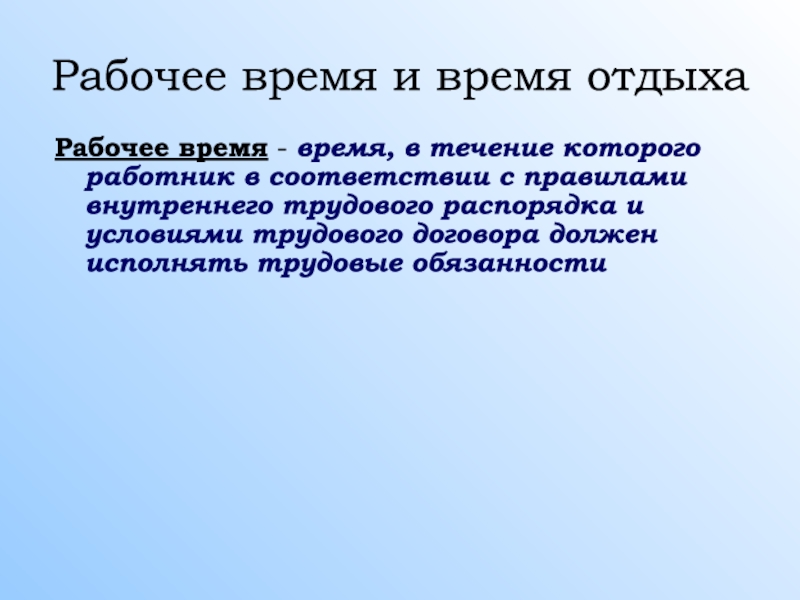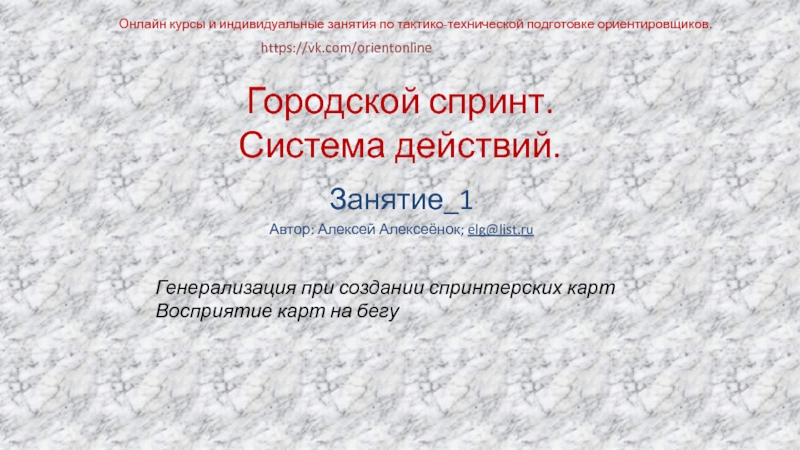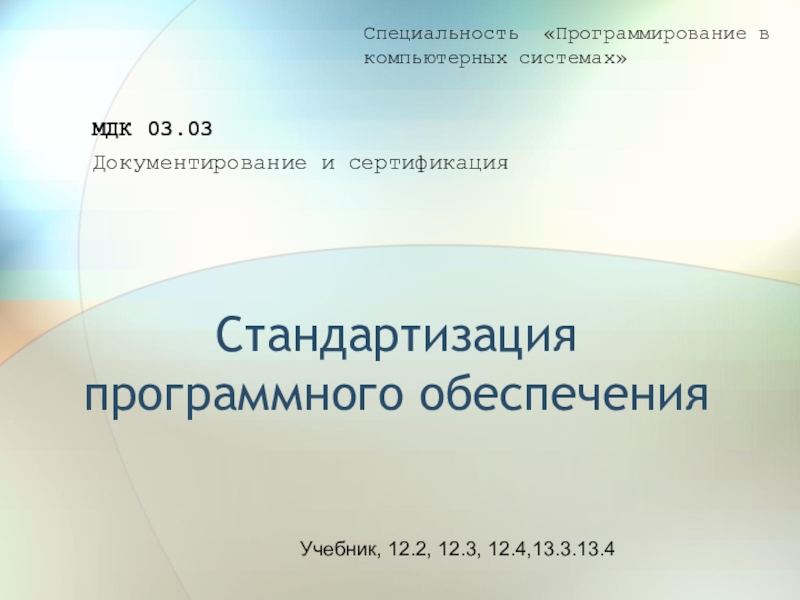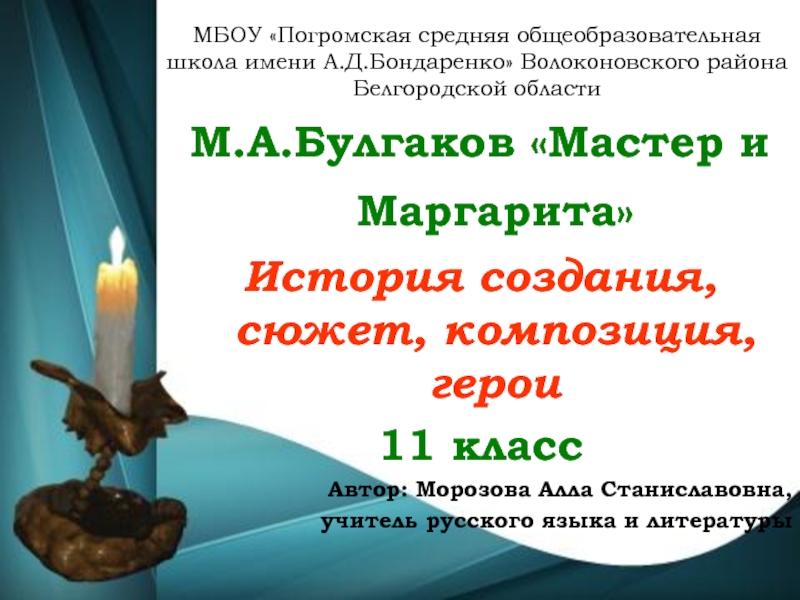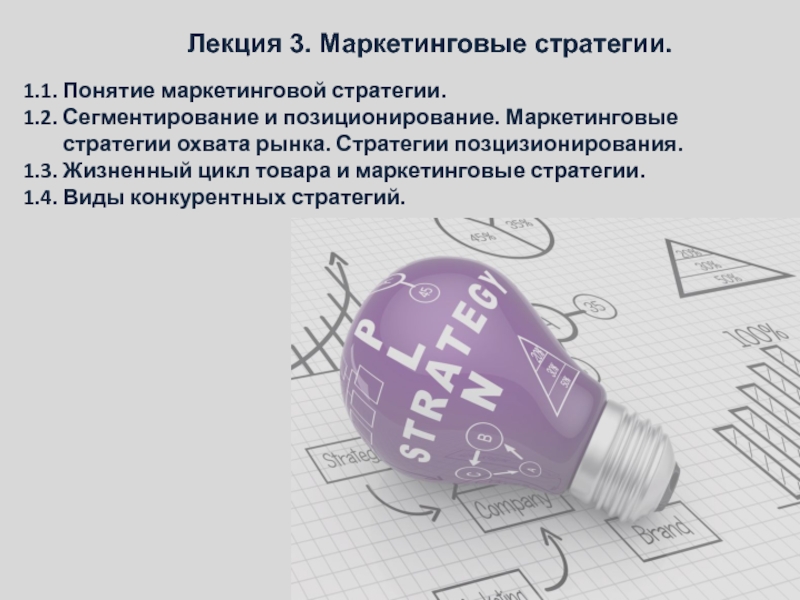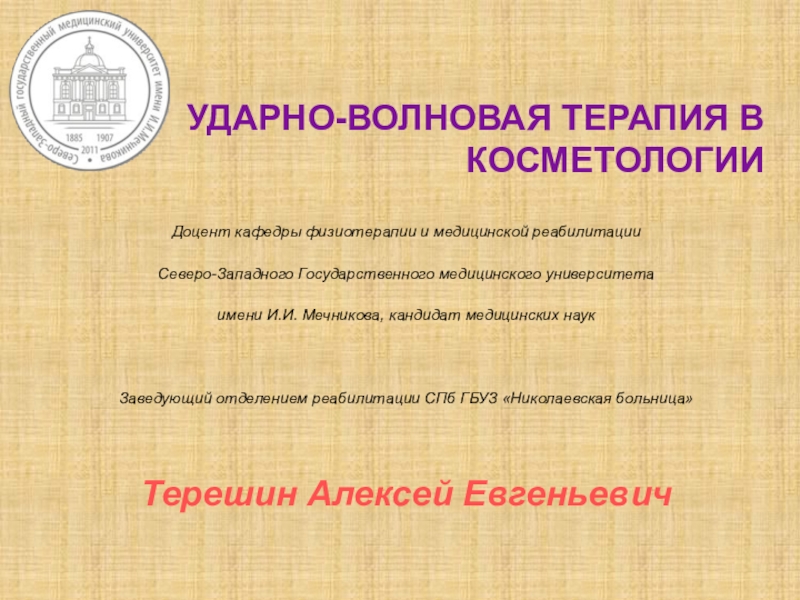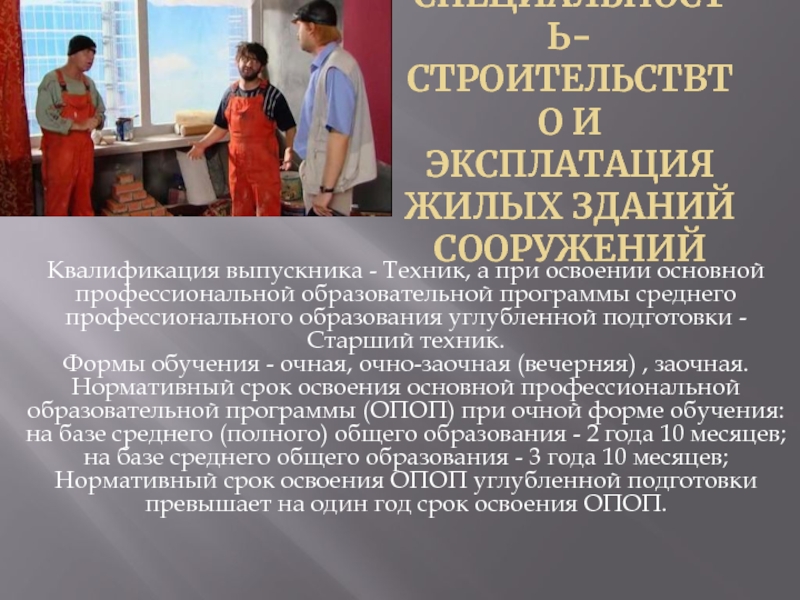Слайд 1Chapter 32
An Introduction to Animal Diversity
Слайд 2Animals Overview
Animals are multicellular, heterotrophic eukaryotes with tissues that develop
from embryonic layers.
There are exceptions to nearly every criterion for
distinguishing animals from other life-forms.
1.3 million living species of animals have been identified.
Слайд 3Which of these organisms are animals?
Слайд 4Animal Structure and Specialization
Nutritional Mode: Animals are heterotrophs that ingest
their food.
Animals are multicellular eukaryotes.
Their cells lack cell walls.
Their bodies
are held together by structural proteins such as collagen.
Nervous tissue and muscle tissue are unique to animals.
Слайд 5Reproduction and Development
Most animals reproduce sexually, with the diploid stage
usually dominating the life cycle.
After fertilization, the zygote undergoes rapid
cell division called cleavage.
Cleavage leads to formation of a blastula.
The blastula undergoes gastrulation, forming a gastrula with different layers of embryonic tissues.
Слайд 6Animal Early Embryonic Development
Zygote
Cleavage
Eight-cell stage
Blastula
Cross section
of blastula
Blastocoel
Gastrulation
Blastopore
Gastrula
Archenteron
Ectoderm
Endoderm
Blastocoel
Слайд 7Many animals have at least one larval stage.
A larva is
sexually immature and morphologically distinct from the adult; it eventually
undergoes metamorphosis.
All animals, and only animals, have Hox genes that regulate the development of body form.
Although the Hox family of genes has been highly conserved, it can produce a wide diversity of animal morphology.
Слайд 8The history of animals spans more than half a billion
years
The animal kingdom includes a great diversity of living species
and an even greater diversity of extinct ones.
The common ancestor of living animals may have lived between 675 and 875 million years ago.
This ancestor may have resembled modern choanoflagellates, protists that are the closest living relatives of animals.
Слайд 9Three lines of evidence that choanoflagellates protists are closely related
to animals
OTHER
EUKARYOTES
Choanoflagellates
Sponges
Other animals
Animals
Individual
choanoflagellate
Collar cell
(choanocyte)
Слайд 10Early members of the animal fossil record include the Ediacaran
biota, which dates from 565 to 550 million years ago
(a)
Mawsonites spriggi
(b) Spriggina floundersi
1.5 cm
0.4 cm
Слайд 11Paleozoic Era (542–251 Million Years Ago)
The Cambrian explosion (535 to
525 million years ago) marks the earliest fossil appearance of
many major groups of living animals.
There are several hypotheses regarding the cause of the Cambrian explosion
New predator-prey relationships
A rise in atmospheric oxygen
The evolution of the Hox gene complex.
Слайд 13Mesozoic Era (251–65.5 Million Years Ago)
Animal diversity continued to increase
through the Paleozoic, but was punctuated by mass extinctions.
Animals began
to make an impact on land by 460 million years ago.
Vertebrates made the transition to land around 360 million years ago.
Coral reefs emerged, becoming important marine ecological niches for other organisms.
During the Mesozoic era, dinosaurs were the dominant terrestrial vertebrates.
The first mammals emerged.
Слайд 14Cenozoic Era (65.5 Million Years Ago to the Present)
The beginning
of the Cenozoic era followed mass extinctions of both terrestrial
and marine animals.
These extinctions included the large, nonflying dinosaurs and the marine reptiles.
Modern mammal orders and insects diversified during the Cenozoic.
Слайд 15 Animals can be characterized by “body plans”
Zoologists sometimes categorize
animals according to a body plan, a set of morphological
and developmental traits.
A grade is a group whose members share key biological features.
A grade is not necessarily a clade, or monophyletic group.
Слайд 16Body Plan -- Symmetry
Animals can be categorized according to the
symmetry of their bodies, or lack of it.
Some animals have
radial symmetry.
Two-sided symmetry is called bilateral symmetry.
Animals with bilateral symmetry have:
A dorsal (top) side and a ventral (bottom) side
A right and left side
Anterior (head) and posterior (tail) ends
Cephalization, the development of a head. (Brain…)
Слайд 17Animal Body Symmetry
(a) Radial symmetry
(b) Bilateral symmetry
Слайд 18Body Plan -- Tissues
Animal body plans also vary according to
the organization of the animal’s tissues.
Tissues are collections of specialized
cells isolated from other tissues by membranous layers.
During development, three germ layers give rise to the tissues and organs of the animal embryo.
Слайд 19Ectoderm is the germ layer covering the embryo’s surface.
Endoderm is
the innermost germ layer and lines the developing digestive tube,
called the archenteron.
Diploblastic animals have ectoderm and endoderm.
Triploblastic animals also have a middle mesoderm layer; these include all bilaterians.
Embryonic Germ Layers
Слайд 20 Body Cavities
Most triploblastic animals possess a body cavity.
A true body cavity is called a coelom and is
derived from mesoderm. Coelomates are animals that possess a true coelom.
A pseudocoelom is a body cavity derived from the mesoderm and endoderm. Triploblastic animals that possess a pseudocoelom are called pseudocoelomates.
Triploblastic animals that lack a body cavity are called acoelomates.
Слайд 21Triploblastic Animals Body Cavities
Coelom
Body covering
(from ectoderm)
Digestive tract
(from endoderm)
Tissue layer
lining coelom
and suspending internal organs
(from mesoderm)
(a) Coelomate - true body
cavity
Body covering
(from ectoderm)
Pseudocoelom
Digestive tract
(from endoderm)
Muscle layer
(from
mesoderm)
(b) Pseudocoelomate
Body covering
(from ectoderm)
Tissue-
filled region
(from
mesoderm)
Wall of digestive cavity
(from endoderm)
(c) Acoelomate - lack a body cavity
Слайд 22 Cleavage:
protostome or deuterostome
development
In protostome development, cleavage is spiral and determinate.
In deuterostome development,
cleavage is radial and indeterminate.
With indeterminate cleavage, each cell in the early stages of cleavage retains the capacity to develop into a complete embryo.
Indeterminate cleavage makes possible identical twins, and embryonic stem cells.
Слайд 23Protostome
Development
molluscs, annelids
Deuterostome
Development
echinoderm, chordates
Eight-cell stage
Eight-cell stage
Spiral
and determinate
Radial and indeterminate
Coelom
Archenteron
(a) Cleavage
(b) Coelom formation
Coelom
Key
Ectoderm
Mesoderm
Endoderm
Mesoderm
Mesoderm
Blastopore
Blastopore
Solid masses of mesoderm
split
and form coelom.
Folds of archenteron
form coelom.
Anus
Mouth
Digestive tube
Mouth
Anus
Mouth develops from blastopore.
Anus develops from blastopore.
(c) Fate of the blastopore
Слайд 24New views of animal phylogeny are emerging from molecular data
Zoologists
recognize about three dozen animal phyla.
Current debate in animal systematics
has led to the development of two phylogenetic hypotheses, but others exist as well.
One hypothesis of animal phylogeny is based mainly on morphological and developmental comparisons.
Another hypothesis is based mainly on molecular data.
Слайд 25A view of animal phylogeny based mainly on morphological and
developmental comparisons
ANCESTRAL
COLONIAL
FLAGELLATE
Metazoa
Eumetazoa
“Porifera”
Bilateria
Deuterostomia
Protostomia
Cnidaria
Ctenophora
Ectoprocta
Brachiopoda
Echinodermata
Chordata
Platyhelminthes
Rotifera
Mollusca
Annelida
Arthropoda
Nematoda
Слайд 26A view of animal phylogeny based mainly on molecular data
Silicea
ANCESTRAL
COLONIAL
FLAGELLATE
Metazoa
Eumetazoa
“Porifera”
Bilateria
Deuterostomia
Lophotrochozoa
Ecdysozoa
Calcarea
Ctenophora
Cnidaria
Acoela
Echinodermata
Chordata
Platyhelminthes
Rotifera
Ectoprocta
Brachiopoda
Mollusca
Annelida
Nematoda
Arthropoda
Слайд 27Points of Agreement
All animals share a common ancestor.
Sponges are basal
animals.
Eumetazoa is a clade of animals - eumetazoans with true
tissues.
Most animal phyla belong to the clade Bilateria, and are called bilaterians.
Chordates and some other phyla belong to the clade Deuterostomia.
Слайд 28Progress in Resolving Bilaterian Relationships
The morphology-based tree divides bilaterians into
two clades: deuterostomes and protostomes.
In contrast, recent molecular studies indicate
three bilaterian clades: Deuterostomia, Ecdysozoa, and Lophotrochozoa.
Ecdysozoans shed their exoskeletons through a process called ecdysis.
Слайд 29Ecdysis - Shedding of Exoskeleton
Слайд 30Some lophotrochozoans have a feeding structure called a lophophore.
Other phyla
go through a distinct developmental stage called the trochophore larva.
Слайд 31Lophotrochozoans Characteristics
Lophophore
Apical tuft
of cilia
Mouth
(a) An ectoproct
(b) Structure of a trochophore
larva
100 µm
Anus
Слайд 32Animal Phylogeny
Common ancestor
of all animals
True
tissues
Sponges
(basal animals)
Ctenophora
Cnidaria
Acoela (basal
bilaterians)
Deuterostomia
Lophotrochozoa
Ecdysozoa
Metazoa
Eumetazoa
Bilateria (most animals)
Bilateral
summetry
Three germ
layers
Слайд 33You should now be able to:
List the characteristics that combine
to define animals.
Summarize key events of the Paleozoic, Mesozoic, and
Cenozoic eras.
Distinguish between the following pairs or sets of terms: radial and bilateral symmetry; diploblastic and triploblastic; spiral and radial cleavage; determinate and indeterminate cleavage; acoelomate, pseudocoelomate, and coelomate
Compare the developmental differences between protostomes and deuterostomes.
